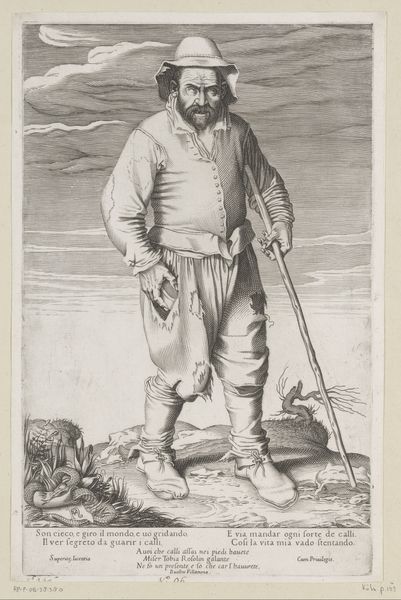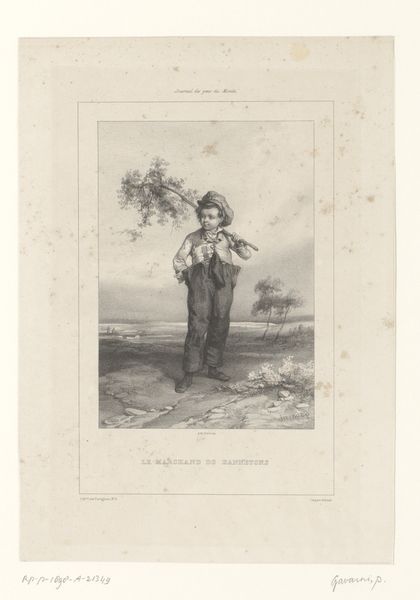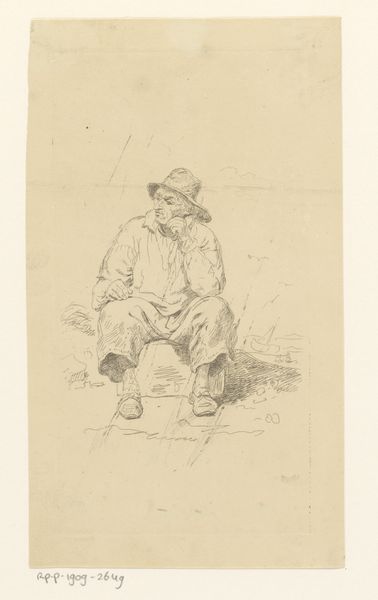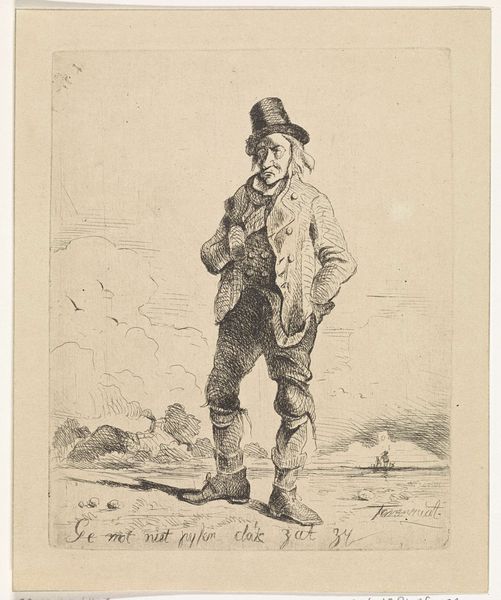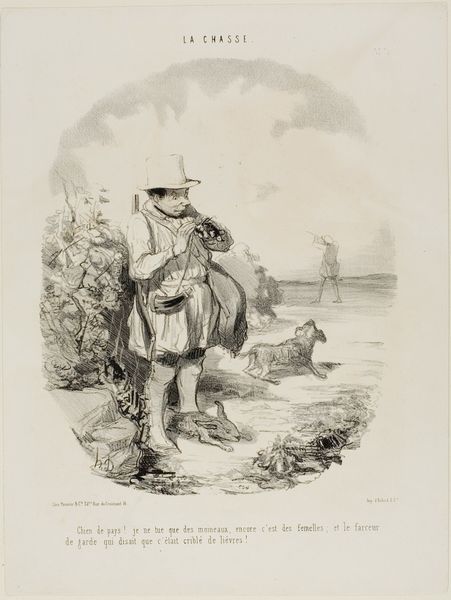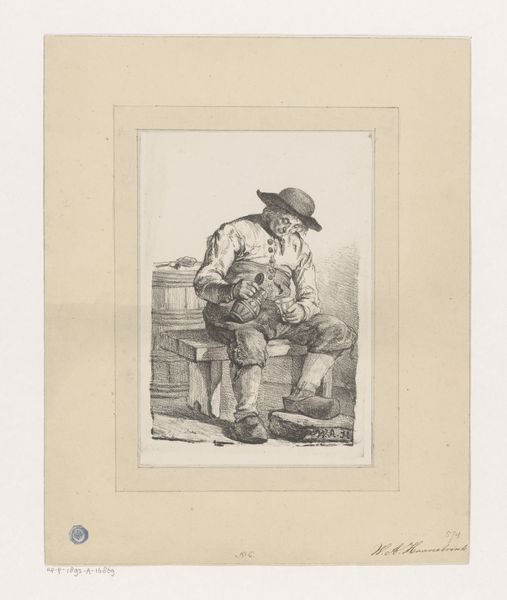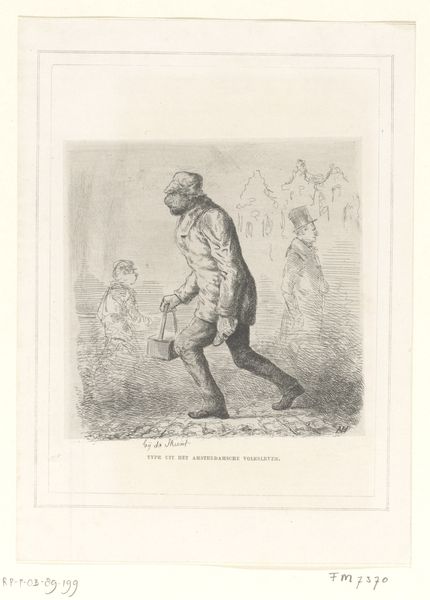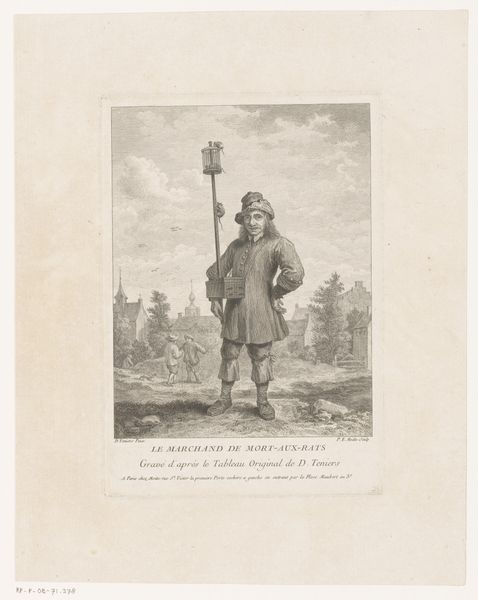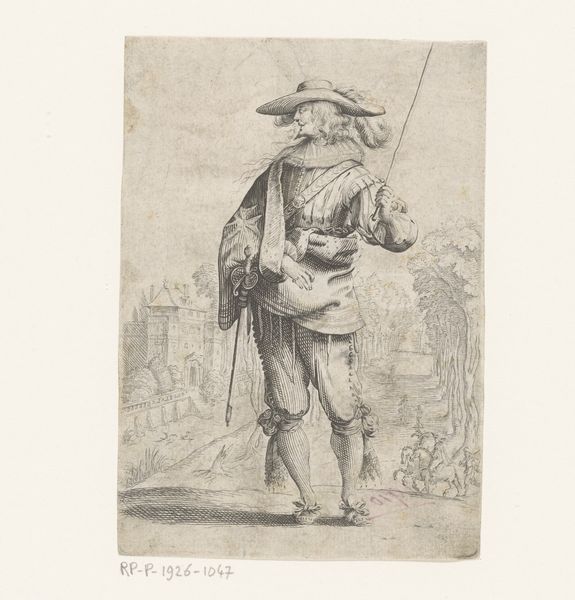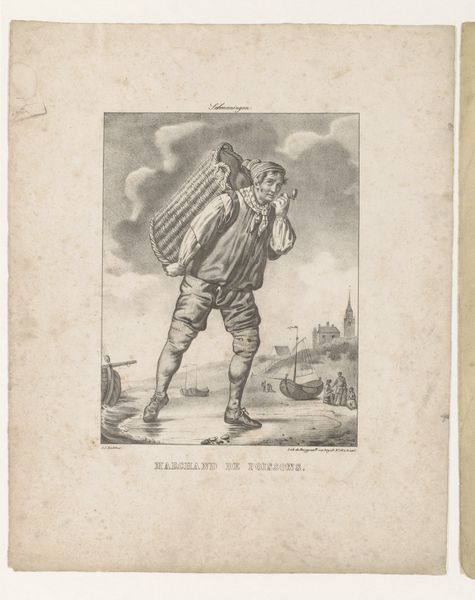
drawing, pen
#
drawing
#
landscape
#
figuration
#
pen
#
genre-painting
Dimensions: height 89 mm, width 59 mm
Copyright: Rijks Museum: Open Domain
Curator: Here we have Egidius Linnig's "Fisherman from Blankenberge," a pen drawing from 1841 in the Rijksmuseum collection. It immediately strikes me as somber; the figures seem burdened, staring into the distance. Editor: That initial sense is very much carried in its medium, the pen strokes making clear that these are the very tools that enabled the image, yet equally a source of labor; the work involved in capturing their forms contributes to this reading. Curator: I see that. It portrays a coastal community and the men, these individuals who are inextricably linked to the sea's bounty but also its perils. Consider Blankenberge in 1841, a time of nascent industrialization yet also of persistent reliance on traditional livelihoods. Their identities as fishermen, how did it shape their daily realities? Editor: Exactly. The depiction centers on the tools and the catch. See how their heavy gear underscores their labor and their existence—everything suggests an inescapable connection between themselves, what they use to secure livelihood, and what they extract from it. Their hats, clothing, and nets serve as their most precious items because with their production they bring food to the table. Curator: Their stoicism is evident, the lack of dynamism suggests perhaps that we should acknowledge the political factors related to the access of natural resources by lower economic classes and its influence on identity. How are the individuals forced to be content by their class, background, means and political realities? Editor: Absolutely. The emphasis on materiality reminds us to go beyond a romantic reading and see it instead as a form of historical record of lives lived according to the dictates of particular material and working conditions. The landscape behind, in effect, turns into part of an industrialized context rather than simple, untouched nature. Curator: Ultimately, viewing this work, and remembering that Linnig was exploring genre-painting that focused on figuration as well, brings to the forefront class awareness when trying to grapple with both history and how current theory relates to identity. Editor: For me, it is Linnig's detailed accounting of labor through simple material realities and making methods that allows for us to discuss bigger context that is inclusive, critical, and real. A moving visual record.
Comments
No comments
Be the first to comment and join the conversation on the ultimate creative platform.
